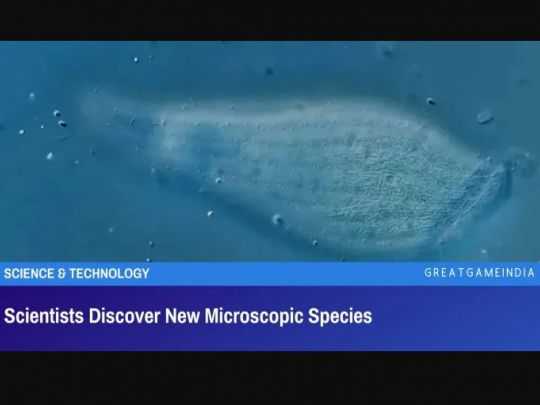“Our Species is Being Genetically Modified”: Humanity’s March Toward Extinction? Analysis of the Microbiome and Virome

This year marks a seminal turning point in human history. For the first time since human civilization began, our species is being genetically modified. Vaccine manufacturers have now made it possible for the human genome to be permanently altered—and humanity’s relationship with nature forever changed—by means of an experimental pharmaceutical injection that is being falsely referred to as a “vaccine.”
In light of this defining event, I believe we must take a sober look at the motives and acts that are revamping humanity as we know it. Simultaneously, we must examine our increasingly destructive treatment of the natural world.
In order to investigate the many variables that are hastening the demise of humanity and sabotaging our unique role as stewards of the earth and its billions of plant and animal species, I have divided this study into four main parts, which will appear as separate articles:
In Part I: The Microbiome and The Virome, we will discover that we are literally swimming in a vast sea of genomic information that was essential for life to begin and flourish on this precious earth and that is still trying to help all species survive. The matrix of organisms that make up the microbiome have built a viromic information stream that has allowed for adaptation and biodiversity to occur on the planet. And that very same viromic information stream is responsible for building the human species.
In Part lI: Our War Against Nature, we will explore how our own reckless behaviour is destroying the environment, thereby moving us toward the sixth mass extinction. By that I mean, I will be covering the real environmental catastrophe, not the billionaire-funded “global warming/climate change” hoax initiated by the Club of Rome and further promulgated by the World Economic Forum (WEF).
In Part III: What Happened in 2020, we will examine how this real environmental devastation has contributed to the “pandemic” that was rolled out in 2020, that led to the mass experimental injections of unknown substances into human “subjects” in 2021, and that has no foreseeable end. (I put “pandemic” in quotes because of its fraudulent character. Indeed, it is more accurately and aptly described as a plandemic, a scamdemic, a pseudo pandemic or any other term indicating fakery.)
In Part IV: Our Response, we will analyze the irresponsible and irrational response of most people on the planet to this so-called pandemic.
Parts II, III and IV will be published later by Global Research.
The Microbiome
The microbiome (derived from the Greek words micro, meaning “small,” and biotikos, meaning “pertaining to life”) is a massive ecosystem consisting of trillions of microorganisms. Incredibly, some 40,000 species of bacteria, 300,000 species of parasites, 65,000 species of protozoa, and between 3.5 million and 5 million species of fungi inhabit the environment around us and live in or on the human body. This complex world of microorganisms continually secretes a sea of viruses, which serve as a communication network for the bacteria, parasites, protozoa, and fungi. And, as we will discover shortly, these viruses have always been here to help us, not hinder us. In other words, they are life-affirming, not death-inducing.
Here’s a hint of the microbiome’s intricacy, incredible diversity, and infinitesimal size: The number of genes within the fungal kingdom is at least 125 trillion! The human genome, by comparison, consists of a mere 20,000 genes. A fruit fly has 13,000 genes, a flea 31,000. Thus, in terms of genetic complexity, the human genome has just a tiny fragment of genetic information compared to the vast world of genomic information contained within the microbiome.
One fascinating aspect of the microbiome is its symbiotic communication network, which allows the transmission of protein information from one microorganism to one another. For example, the mycelial network (a matrix of fine white filaments) in fungi allows the fungi to communicate with each other over distances that can stretch to several kilometers. These mycelial structures are capable of transferring mineral and protein resources more than a kilometer. How? They use light energy and electrons that flow through the pathways within the soil system. In this way, the microbiome helps plants and other multicellular life forms flourish. It is no exaggeration to call the mycelial network in the fungal kingdom the literal “brain” of the planet. Incidentally, all of the tiny, intelligent organisms that make up the microbiome are powered by the biophotonic energy of the sun.
Hard as it is to fathom, at least 1.4 quadrillion bacteria and 10 quadrillion fungi live inside the human body. Within the human colon alone are 3.8 x 1013bacteria cells. Every single organ in the body, including the brain, has its own microbiome. The purpose of the bacteria and fungi in our bodies is to nourish and nurture our cells, keeping us healthy and in equilibrium with the larger microbiome surrounding us.
The Virome
The virome is the immense world in which Mother Nature’s messengers exist. It is composed of trillions upon trillions of viruses produced by the aforementioned microbiome’s bacteria, parasites, protozoa, and fungi.
The average adult human body contains 1 x 1015 viruses. By contrast, in the air enveloping the earth there are 1 x 1031viruses; in the earth’s soil there are 2.5 x 1031 viruses; and in the earth’s oceans there are 1.2 x 1030viruses. To provide some perspective on these awe-inspiring numbers, 1 x 1031is 10 million times greater than the number of known stars in the entire universe.
Simply put, a virus is genomic information, either DNA or RNA, wrapped in a protein envelope. The small strands of protein protruding outward from the outer surface of a virus’s protein envelope are called spike proteins. Viruses are not living organisms. They do not produce their own fuel. They have no metabolism for producing energy. And they cannot reproduce.
Viruses have been traveling globally, above the atmospheric boundary layer, for millions of years, long before machines for air travel were invented. Their genetic codes have been blanketing the earth for eons, creating biodiversity and allowing for adaptation throughout the ecosystem. By adaptation, I mean that viruses are always seeking to adapt their genetic codes for the purpose of creating resilient health in all of the planet’s life forms. It is ridiculous to suggest that, in order to travel from one region of the globe to another, a virus must hop on an aircraft, as RAND’s National Security Research Division would have us believe.
Furthermore, viruses—including coronaviruses—do not come in waves and then disappear without a trace, only to miraculously reappear later in the same spot or a different one. Instead, viruses never leave, never expire. They inhabit every element in the environment around us. In short, they are omnipresent and ever-present.
Our relationship with particular viruses can change as a consequence of our harmful actions toward nature. Whenever humans poison and pollute the air, soil, and water, they create an imbalance between humanity and the virome—an imbalance that can cause us to come into disequilibrium with a particular virus.
Unfortunately, the allopathic medicine regime, which plutocrats John D. Rockefeller and Andrew Carnegie forced on most of the world with their 1910 Flexner Report, still has a large segment of the scientific community believing that bacteria, fungi, and viruses are our enemy.

The foundation of Rockefeller’s allopathic medicine scheme is Louis Pasteur’s flawed “germ theory,” which claims that outside microorganisms such as bacteria and viruses attack, invade, and infect the body, thereby causing disease.
Most of the Western world credits Pasteur (1822–1895) with playing a fundamental part in establishing what we call “modern medicine”—a paradigm that traces the origin of each disease to a single germ.
Without Pasteur’s theory, most modern drugs would never be produced, promoted, or prescribed—a fact that explains why today’s medical establishment and its codependent pharmaceutical industry refuse to recognise their flaws or own up to their ineffectiveness.

By contrast, “terrain theory,” which was initiated by Claude Bernard (1813–1878) and later built upon by Antoine Béchamp (1816–1908), alleges that the terrain—that is, the internal environment of the body—and not an external germ determines our health or lack thereof. What Béchamp referred to as “terrain” is very close to what modern medicine has now termed the innate immune system. As we will see in the following paragraphs, Béchamp was definitely on the right track in discovering how the human body really interacts with the outside environment.
Unlike Pasteur, Béchamp did have an academic background in science. He believed disease to be a biological result of the changes that take place in the body when its metabolic processes become imbalanced. When the body is in a state of imbalance, Béchamp alleged, germs become symptoms that in turn stimulate more symptoms, which eventually lead to disease.
Although Béchamp was moving in the right direction with his terrain theory, Rockefeller’s germ-dependent pharmaceutical tyranny has prevailed, due largely to substantial infusions of money, which Rockefeller and Carnegie gladly supplied in the form of grants to universities, hospitals, and medical research facilities. Their “philanthropic” largess, which easily exceeded $100 million, enabled them to influence the policy of the entire US medical establishment and eventually most of the Western nations, steering them toward an exclusively chemical-based allopathic regime.
I contend in this article that, contrary to what Rockefeller medicine has been teaching us for over one hundred years, viruses are not here to attack our cells or to harm us in any other manner. On the contrary, the DNA and RNA genetic molecular information contained within the viruses are literally the building blocks of life on earth. To use a modern analogy, we can think of a virus’s information stream as a software update carrying important molecular intelligence that can be uploaded, when required, to any cell of a living multicellular organism—including any one of the 70 trillion cells contained in the human body. Our cells regulate which new genomic information is received and which information is not received. The viruses are simply seeking to adapt to the cells for the purpose of creating resilient human health.
A word here about the immune system. There are two kinds of immunity: innate and adaptive.
The innate immune system is the initial and primary means by which our bodies interact with a virus. The innate system helps the body find a genetic balance with each new viral update that is being presented to it. The body does not need to replicate or reproduce the new viral information after more than 4 or 5 days of updates.
The innate immune system functions on healthy boundaries in the human body, such as the physical barriers between the gut and the bloodstream, or on the blood vessels that tightly regulate the movement of ions, molecules, and cells between the bloodstream and the brain (termed the blood-brain barrier), or at the genetic level in our cells (like the mutagen proteins in our cells). Also, the innate immune system operates through a variety of enzymes—like the APOBec3A/3G and CAS9. These enzymes are now considered central to innate immunity.
The adaptive immune system is the secondary means by which our bodies interact with viruses.
The adaptive system mounts a highly specific response to a virus by utilizing the body’s white blood cells, known as lymphocytes (B cells and T cells). The B cells are responsible for releasing antibodies into the bloodstream. Antibodies are the body’s second—not first—method of interaction with a virus after it receives a new viral update or after it develops an imbalance with a particular virus. Antibodies are specific, targeted defences. They usually show up on the scene 3 to 6 weeks after the body’s initial exposure to a virus. Simply put, antibodies act like a cleanup crew, assisting the body in cleaning out viruses and bacteria that are no longer needed. Meanwhile, the T cells are responsible for stimulating the B cells into making antibodies.
To understand how quickly the human body adapts when exposed to the virome, consider a seven-day-old infant. He has 1 x 108 virus particles in just one gram of feces. Even though that child does not have the capacity to develop any antibodies at such an early stage in life, he nonetheless instantly adapts to these virus particles, remaining perfectly healthy. Instead of developing a fever, he remains in stable equilibrium—homeostasis—with the virome, both microbially and genetically. That fact alone proves that we do not interact with the virome through our adaptive immune system but, rather, interact with it through our innate immune system.
What is the key takeaway from these facts? To me, it is that the body’s decision to take in genetic information is a highly intricate and controlled biological process. There are numerous ways our bodies stay in equilibrium with the huge sea of genetic information that we breathe in and come into contact with every moment of our lives.
Since a virus is not a living organism, our innate immune system cannot kill viruses—nor would it want to. Instead, as mentioned above, the innate immune system simply comes into genetic balance with a new virus. It does this by replicating or receiving updates from that virus—and by immediately responding to that new viral upload. Once genetic balance has been achieved, typically 4 to 5 days after initial exposure to the virus, our innate immune system refuses to receive further updates.
From these facts, we may conclude that humans cannot stop an “epidemic” from occurring, nor can they change the trajectory of an epidemic. In other words, it is useless—actually, worse than useless: it is harmful—to try to check an always-helpful virus by deploying an unapproved experimental gene-editing device that is designed to produce an antibody response (otherwise known as an adaptive immune system response induced by the injection). That antiquated scientific model is biologically illogical and can never work. We now know that it interferes with our beautifully designed innate immune system, which is perfectly capable of handling any virus with which we may develop a temporary imbalance. (Exactly how we develop an imbalance with a particular virus, like the HIV virus or any coronavirus, will be explained later in the article).
Furthermore, contrary to the official narrative propagated by vaccine makers and governmental health agencies around the world, our immune systems do retain a memory of the viruses that our bodies have interacted with and of the genes that were inserted naturally—upon receiving a new viral update—into our cells. In the innate immune system, for instance, the Cas9 enzyme, which is responsible for cleaving excess DNA when too much of a viral upload is presented to a cell, is the natural memory data bank that will remember which DNA pattern it encountered.
In addition, the permanent records kept by an innate immune system are passed down to succeeding generations of humans, who therefore will never have an inflammatory-inducing reaction to a particular virus. Even in the adaptive immune system, the B cells (the source of antibodies) and T cells (the B cells’ stimulus) provide lasting immunity.
A multipronged NIH study presented by the Center for Infectious Disease Research and Policy (CIDRAP) in 2008 proved conclusively that antibody immunity can last for a lifetime. In that study, a group of scientists, led by Dr. Eric Altschuler, collected blood samples from 32 survivors—between the ages of 91 and 101—of the 1918 Spanish Flu pandemic. (Actually, the correct name for that pandemic is the Kansas Flu—its place of origin.) To their amazement, the scientists discovered that, almost a century later, all of the study’s participants still carried the antibodies to the same strain of influenza.
Based on the findings of that 21-year-old study, we can dismiss the propaganda foisted upon us by the mainstream media and medical organizations. It is not true that natural immunity to the SARS-CoV-2 virus may wear off six months to a year after initial exposure. And it is not true that an experimental injection is the only way one can reach immunity. Such unfounded claims are simply ruses invented to further the avaricious agenda of the pharmaceutical industry and the other technocrats operating behind the scenes.
Bottom line: The power of natural immunity will always outperform any perceived immunity to a virus said to result from an injection, whether experimental or government-approved.
Biologically speaking, all life on earth is built from the RNA and DNA molecular genetic sequences contained in viruses. These viruses are exquisitely designed genetic delivery systems essential to initiating and sustaining life on earth. In fact, more than 50 percent of the 20,000 genes inherited by today’s humans were inserted millions of years ago into the mammalian genome by these tiny marvels of nature. At least 8 percent of those genes were inserted by RNA retroviruses similar to the HIV retrovirus. (A retrovirus is an RNA virus which inserts a DNA copy of its genome into the host cell in order to replicate itself.) Equally intriguing is the fact that millions of years ago retroviral updates played a key role in the emergence of placental mammals.
Interestingly, a 2017 study published by the National Institute of Health (NIH) demonstrates that many of us are carrying the HIV retrovirus without even knowing it. In this study, the researchers “explored non-human sequence data from whole-genome sequencing” the blood of 8,240 adults living in the US and Europe—none of whom were ascertained to have any infectious disease. They found that a full 42 percent of the participants tested positive for the presence of 94 known viruses. These viruses included the HIV virus, the hepatitis B virus, the hepatitis C virus, and the influenza virus.
We have been trained by the medical community and the corporate-controlled media to believe that the HIV virus should predominate in people living in Sub-Saharan Africa. After all, we are told, 95 percent of all “HIV positive” cases come from that region of the globe. If that were the case, we would expect to see in other regions very little HIV and a far higher prevalence of, say, hepatitis C or influenza. Not so: It is just the reverse! In fact, the 2017 study found a fivefold higher prevalence of the HIV virus than of hepatitis C and influenza in those 8,240 asymptomatic Americans and Europeans. Amazingly, each one was completely in balance with the HIV virus, even though none of them had ever travelled to Africa. We must conclude from this study that not only has the world completely misunderstood the prevalence of the HIV virus in all corners of the globe but that our fear of it—and of the virome in general—is entirely unjustified.
Given that many powerful organizations, both public and private, profit from the huge grants and donations that perpetuate the endless AIDS movement, it is unsurprising that no scientific peer-reviewed study has been done to provide conclusive evidence that a virus called HIV causes a disease named AIDS. Were any such study to be undertaken, it would prove that the HIV-leads-to-AIDS hypothesis is baseless and, more to the point, fraudulent.
The question scientists should be focusing on is: What is taking place in Sub-Saharan Africa that is creating such an abnormal relationship between people living in that area and the HIV retrovirus, causing 95 percent of them to test HIV-positive?
For an answer to that question, we need to look at the terrain where viruses reside and stay in balance with the human body. (By “terrain” I mean a geographic area with its associated ecosystem. I am not referring here to the aforementioned Bernard/Béchamp terrain theory.) When a terrain is disrupted by anything unnatural to it—for example, poisoning of the environment by irresponsible human behaviour—the viruses become overexpressed and the body’s balance with the virome is lost.
Taking account of the terrain, we find that the number one factor common to all so-called infectious disease epidemics or pandemics is the destruction of the ecosystem. In other words, the natural terrain has been altered by irresponsible human behaviour to such an extent that our innate adaptation to all the genetic information surrounding us is undermined.
It is not that the viruses are causing a disease. Rather, it is that they are simply presenting the body with a new genetic adaptation option. The body’s innate immune system then determines how much of that new information it will absorb. If the cells are in dire need of repair—perhaps as a result of poor dietary choices, a sedentary lifestyle, or toxicity in the environment—the virus will create an inflammation event as the body goes through its regenerative process. This is usually accompanied by a fever, loss of appetite, and an elevated white blood cell count. Such an inflammatory event is what we commonly refer to as “the flu.”
What we derogatively call an inflammatory event—implying it is bad for the body—is actually a part of the body’s healing process. The inflammation is needed to create regeneration within the body. It is acting on behalf of the body, not against it. But if the body’s microbiome is replete instead of wanting, it will not need an update, and therefore no inflammation will take place.
In the case of Sub-Saharan Africa, the ecosystem is dying. The collapse of nutrient-rich soil systems, poor water hygiene, a lack of basic sanitation, a chronically undernourished population, and the complete elimination of traditional organic farming—overtaken by the oxymoronic Green Revolution, foisted on developing countries by industrial agriculture—have caused a large portion of that population to develop an imbalance between their innate immune system and the environment. The syndrome known as “AIDS” is an expression of that imbalance. The HIV virus, which was first discovered by French virologist Luc Montagnier, has been falsely accused of being the primary culprit responsible for AIDS—a form of guilt by association. In actual fact, the HIV virus is benign and is not trying to take over the mechanics of any cell.
The real root of the problem is that the innate immune system of the Sub-Saharan African people has been degraded by a lack of nutrition to such an extent that they are falling prey to a myriad of illnesses, which have been collectively grouped under the single title “AIDS.” However, instead of coming to terms with the reality of what the dire ecological disaster is causing, “scientists” are blaming the HIV virus as a cover to hide decades of government and corporate environmental and economic crimes.
From the information covered thus far, we can rightly conclude that it is impossible for viruses or pathogens to create infectious disease pandemics and epidemics—for there is no such thing as an infectious disease in the traditional sense of the term—examples being “AIDS,” “Ebola,” and other unfounded “viral” pandemics. Yes, pharmaceutical propaganda has been pushing the infectious disease paradigm on world thought for centuries. But the belief that such diseases exist is no more than an outgrowth of Pasteur’s debunked germ theory. What we commonly refer to as an epidemic or a pandemic is simply the result of a degraded innate immune system showing up in a segment of the planet’s population. The reasons for this degradation can include chemical poisoning from herbicides, pesticides, or genetically modified foods, which we will look at in more detail below.
As we can see by the above description of the virome, it is no exaggeration to say that the virome is the language of all life on earth. We are literally swimming in a vast sea of genomic information that was essential for life to begin and flourish on this precious earth and that is still trying to help all species survive. The matrix of organisms that make up the microbiome have built a viromic information stream that has allowed for adaptation and biodiversity to occur on the planet. And that very same viromic information stream is responsible for building the human species.
Thus, humans are not separate from the virome and the microbiome but are, rather, integral to the virome and microbiome’s vast, complex ecosystem. Yet we have increasingly placed ourselves in direct opposition to the very living system of which we are an intrinsic part: nature.
- Source : David Skripac


















